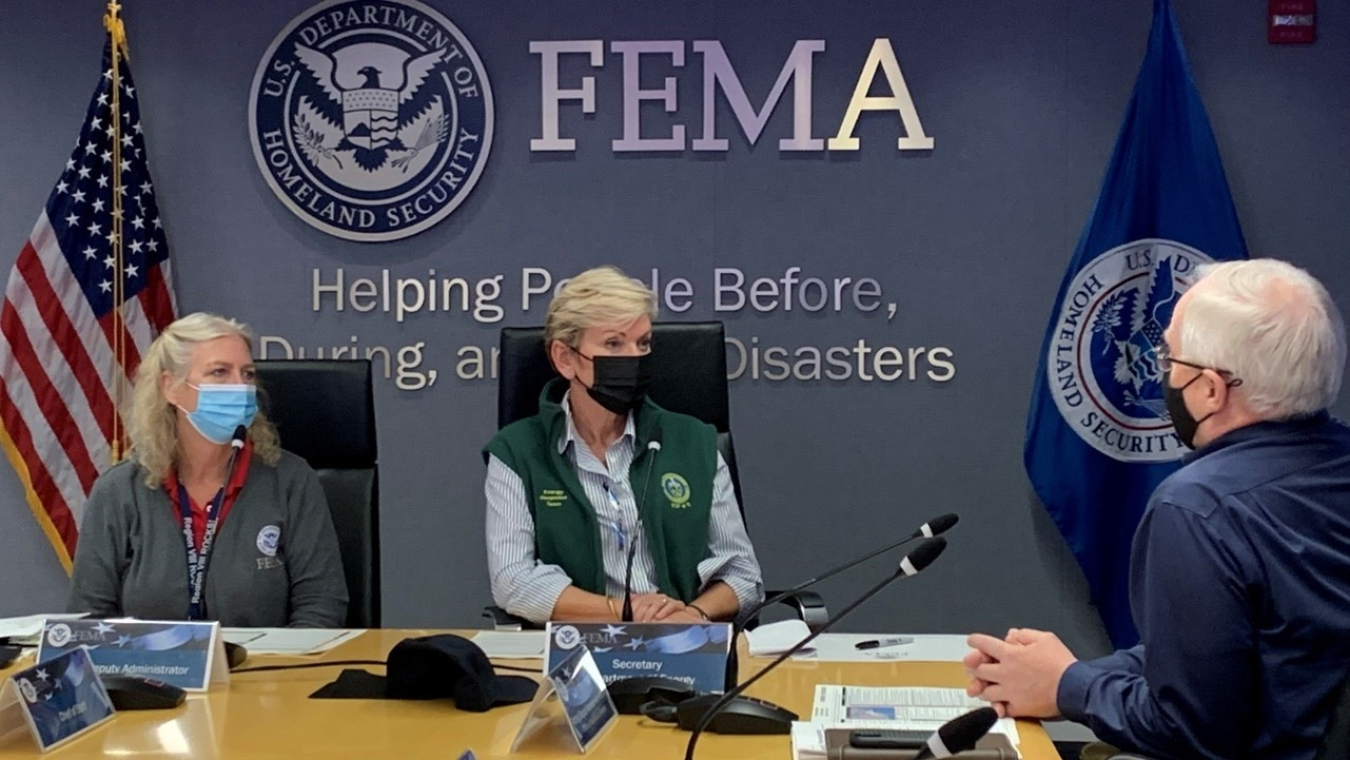Throughout 2021, DOE’s emergency responders supported the U.S. energy sector through countless response and restoration efforts to protect and secure the energy supply that millions of Americans depend on every day.
Office of Cybersecurity, Energy Security, and Emergency Response
December 20, 2021Throughout 2021, DOE’s emergency responders supported the U.S. energy sector through countless response and restoration efforts to protect and secure the energy supply that millions of Americans depend on every day.
2021 was a busy year, with the pandemic continuing across the nation and a number of weather-related emergencies – including 21 named Atlantic storms – over the course of the year. During any incident requiring a coordinated federal response – whether it was a hurricane, wildfire, or cyber incident, DOE’s emergency responders were prepared to work with government, industry, and state partners to share situation reports, assess impacts to the energy sector, restore energy systems to full capacity, and identify any unmet needs that may require federal support or coordination.

Here are 5 major events that DOE’s emergency response team supported in 2021:
- Hurricane Ida – Hurricane Ida made landfall as a category 4 hurricane near Port Fourchon, Louisiana on August 29, 2021. DOE’s Energy Response Organization was quickly activated and 16 ESF#12 responders were deployed to FEMA coordination centers across the Southeast to conduct damage assessments to regional and local energy infrastructure and work with federal, state and industry officials to assist with restoration and logistics.
- California Wildfires – The summer of 2021 saw a record number of devastating wildfires rage across the Western United States, with over 3 million acres of land burned in California alone.
DOE ESF#12 was activated to support the California Wildfires and deployed 5 responders virtually, providing situational awareness and outage information to industry and state partners. In addition, DOE ESF#12 worked with interagency coordinates like FEMA and the U.S. Army Corps of Engineers, as well as local utility partners to communicate restoration times and help plan for temporary emergency power and sheltering missions. - Colonial Pipeline Response Efforts: On May 7, 2021, the Colonial Pipeline Company proactively halted pipeline operations to contain the threat made by a ransomware attack on the company’s IT system. DOE’s response team worked around-the-clock with partners, including FBI, CISA, and FERC, to mitigate gas shortages caused by the closure and resume the pipeline operations resume as quickly, safely, and securely as possible.
- Winter Storm Uri: In February 2021, an arctic air mass brought snow, ice, and extreme cold temperatures to the Central United States, causing record winter power demand and impacting power generation. During this incident, DOE’s emergency responders provided situational awareness, exchanged information with state emergency responders and policymakers, and implemented Federal authorities with interagency partners to facilitate a safe and secure restoration of critical energy assets across the nation.
- 2021 Presidential Inauguration: Joe Biden was inaugurated as the 46th president of the United States on the West Front of the United States Capitol in Washington, D.C. on January 20, 2021. To ensure a smooth transition power during this National Special Security Event, DOE’s Emergency Support Function 12 (ESF#12) Regional Coordinators supported the event from Jan. 14 – Jan 21, providing support as technical experts on energy infrastructure and supporting the U.S. Secret Service at the Multi Agency Communication Center.

This is a just a snapshot of the support DOE’s response team provided throughout the year. In 2021 and coming years, DOE is building on lessons learned to ensure response and recovery procedures are in place for natural disasters, petroleum shortages, cyberattacks – or any other hazard that could potentially disrupt the energy sector. This includes new operational and strategic plans and mitigative measures like backup power generation along evacuation routes and mutual aid networks across electric utilities.
Thank you to all of DOE’s response partners for their dedicated work this year. To learn more about the Department’s emergency response efforts in 2021, visit CESER’s Emergency Response Hub.
#PoweringThruTogether
Under the National Response Framework and Emergency Support Function #12, DOE’s Office of Cybersecurity, Energy Security, and Emergency Response (CESER) has the authority to coordinate and respond to hazards facing the energy sector, as well as emergency situations. Learn more here.

